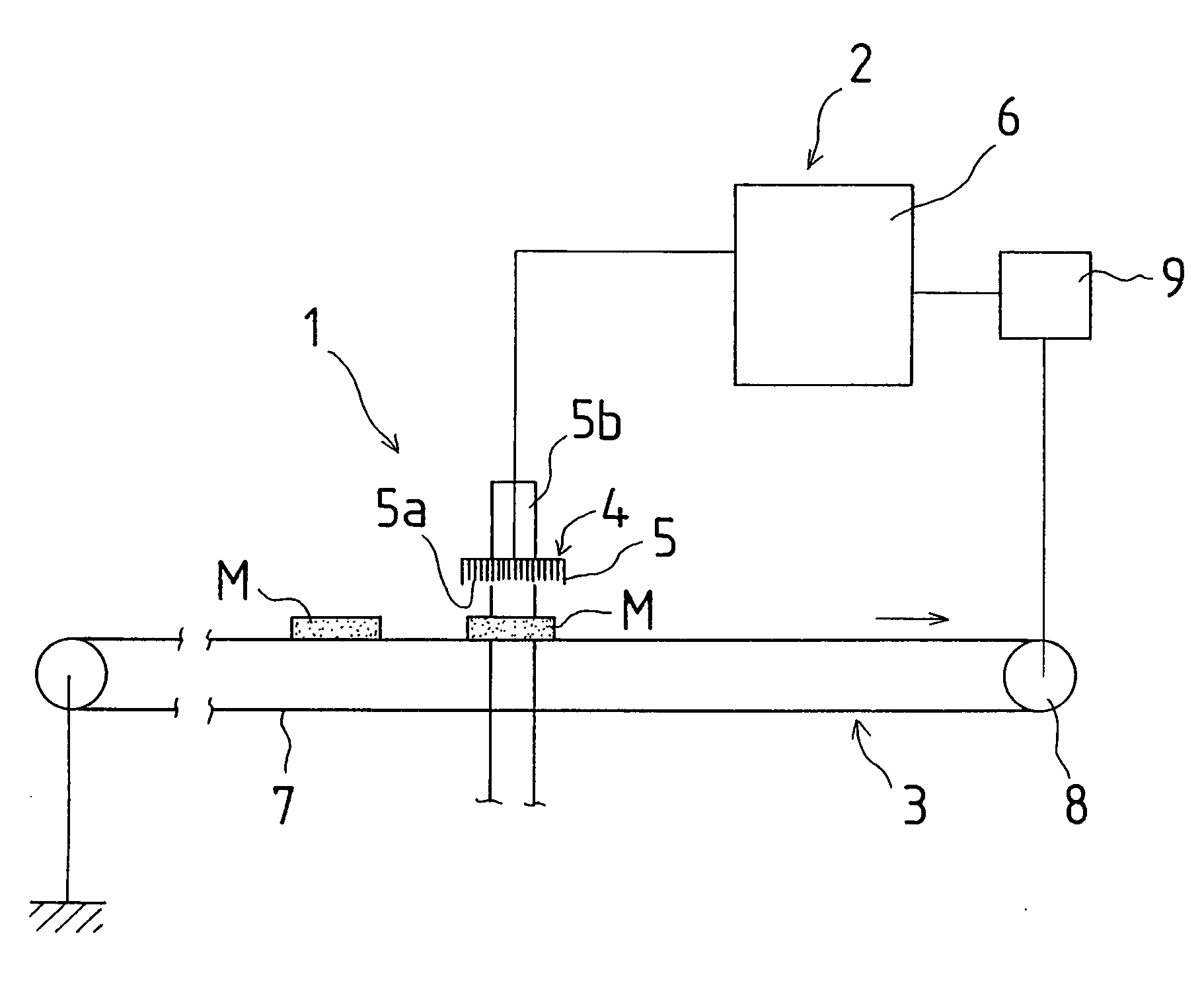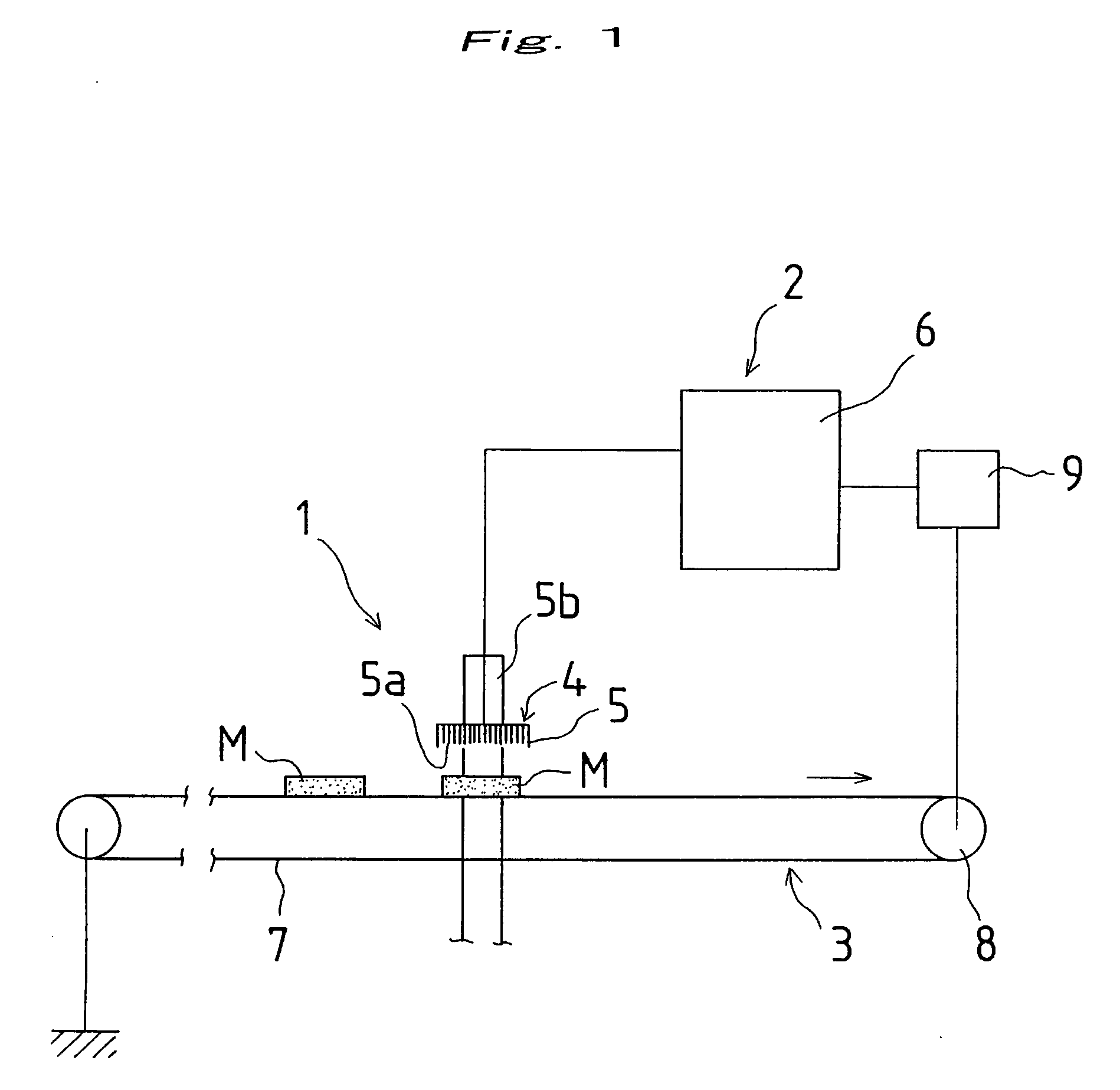Resin molded product
a technology products, applied in the field of resin molded products, can solve the problems of inability to exhibit the required level of electrical conductivity, the electrical conductivity of the resin molded product obtained through this method is susceptible to ambient humidity, and the damage of electronic components such as integrated circuits, etc., and achieve the effect of increasing the electrical conductivity of the resin molded produ
- Summary
- Abstract
- Description
- Claims
- Application Information
AI Technical Summary
Benefits of technology
Problems solved by technology
Method used
Image
Examples
example 1
[0092] Polyacrylonitrile-based carbon short fibers (available under the trade name of “PYROFIL” from Mitsubishi Rayon Co., Ltd.) having an average fiber diameter of 7 μm, an average aspect ratio of 857 and a collective filler electrical resistance of 0.06 Ω cm were prepared as an electrically conductive filler.
[0093] Next, the aforesaid fibers, a yellow coloring material (available under the trade name of “CB116” from Toyo Kasei Co., Ltd.), titanium oxide (available under the trade name of “CR60” from Ishihara Sangyo Co., Ltd.) as a masking material, and talc (available under the trade name of “#1000” from Fuji Talc Co., Ltd.) were supplied into a polyphenylene oxide resin (available under the trade name of “NORYL PPO534” from Japan General Electric Co., Ltd.) as a resin material by means of a feeder, and mixed therewith for preparation of pellets (molding material) of the resin material containing the fibers, the coloring material and the masking material. The mixing proportion of...
example 2
[0098] Polyacrylonitrile-based carbon short fibers (available under the trade name of “PYROFIL” from Mitsubishi Rayon Co., Ltd.) having an average fiber diameter of 7 μm, an average aspect ratio of 857 and a collective filler electrical resistance of 0.06 Ω cm, a yellow coloring material (available under the trade name of “CB116” from Toyo Kasei Co., Ltd.), titanium oxide (available under the trade name of “CR60” from Ishihara Sangyo Co., Ltd.) as a masking material, and mica (available under the trade name of “Kuraray Mica 200HK” from Kuraray Co., Ltd.), were mixed with a polypropylene resin (available under the trade name of “NOVATEC BC3B” from Japan Polychem Co., Ltd.) as a resin material in substantially the same manner as in Example 1 for preparation of pellets. The mixing proportion of the fibers was set to be 5.0 wt % in the pellets. The mixing proportions of the coloring material, titanium oxide and mica were set to be 0.6 wt %, 0.2 wt % and 1.0 wt %, respectively. The pelle...
example 3
[0102] A yellow disk was produced in substantially the same manner as in Example 2 except that the mixing proportions of the fibers and the coloring material were changed to 6.0 wt % and 1.0 wt %, respectively, and titanium oxide and mica were not used. The average residual aspect ratio of the polyacrylonitrile-based carbon short fibers in the disk was 52.3. After the surface resistance of the disk was measured, a voltage application process was performed on the disk under substantially the same conditions as in Example 2. The surface resistance of the disk before the voltage application process was 8×1013 Ω / □, whereas the surface resistance of the disk after the voltage application process showed a reduced value of 4×105 Ω / □. The color of the disk did not change even after the voltage application process.
[0103] Further, a thermogravimetric analysis was performed on the disk before the voltage application process in substantially the same manner as in Example 2. The result is shown...
PUM
| Property | Measurement | Unit |
|---|---|---|
| Diameter | aaaaa | aaaaa |
| Diameter | aaaaa | aaaaa |
| Diameter | aaaaa | aaaaa |
Abstract
Description
Claims
Application Information
 Login to View More
Login to View More - R&D
- Intellectual Property
- Life Sciences
- Materials
- Tech Scout
- Unparalleled Data Quality
- Higher Quality Content
- 60% Fewer Hallucinations
Browse by: Latest US Patents, China's latest patents, Technical Efficacy Thesaurus, Application Domain, Technology Topic, Popular Technical Reports.
© 2025 PatSnap. All rights reserved.Legal|Privacy policy|Modern Slavery Act Transparency Statement|Sitemap|About US| Contact US: help@patsnap.com



